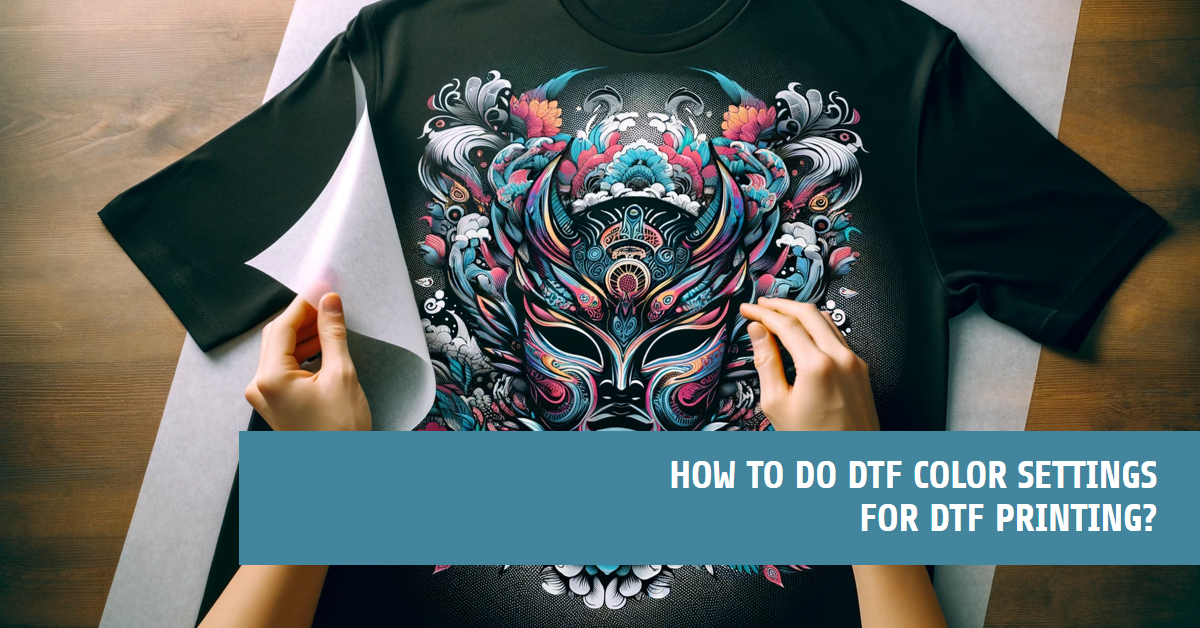Explore the innovation that is Custom DTF Transfers, a technology that has transformed garment printing, offering an efficient and cost-effective alternative to traditional methods. Ideal for small to medium-sized apparel businesses, DTF printing ensures vibrant colors and intricate details.
However, understanding and customizing DTF color settings is paramount for optimal results. Enhancing these settings can significantly boost the print quality, ensuring designs are not just seen but remembered. Join us as we delve deeper into the importance of color settings in DTF printing, offering insight and guidance to achieve the finest prints for your apparel.
What are Color Nodes and Color Spaces?
Color modes are ways of representing colors using a specific set of primary colors. The most common color modes are RGB (red, green, and blue) and CMYK (cyan, magenta, yellow, and black).
RGB: RGB is an additive color mode, meaning that colors are created by adding different amounts of red, green, and blue light. RGB is the color mode used by computer monitors and other digital displays.
CMYK: CMYK is a subtractive color mode, meaning that colors are created by subtracting different amounts of cyan, magenta, yellow, and black ink from white paper. CMYK is the color mode used in printing.
Other color modes include HSL (hue, saturation, and lightness), HSV (hue, saturation, and value), and YUV (luma and two chroma components). These color modes are often used in image processing and video editing.
Color spaces define the specific range of colors that can be represented by a color mode. For example, sRGB is a color space that is commonly used for displaying images on the web. Adobe RGB is a color space that has a wider range of colors than sRGB, and is often used for professional photography and printing.
When choosing a color mode and color space, it is important to consider the intended purpose of the image. If the image is going to be displayed on the web, it is best to use the sRGB color space. If the image is going to be printed, it is best to use a color space with a wider range of colors, such as Adobe RGB.
It is also important to note that different devices have different color gamuts, meaning that they can display different ranges of colors. For example, a high-end computer monitor may have a wider color gamut than a smartphone. This means that an image that looks good on one device may not look as good on another device.
How to do Color Settings on Adobe Photoshop?
To set up color settings in Adobe Photoshop for DTF printing, you can follow these steps:
Open the Color Settings dialog box: Go to the Edit menu and choose Color Settings.
Choose a preset: For DTF printing, it is recommended to use the "North America General Purpose 2" preset. You can choose this preset from the Settings dropdown menu.
Choose RGB working spaces: Under the RGB working space menu, choose "sRGB IEC61966-2.1" as the RGB working space.
Choose CMYK working spaces: Under the CMYK working space menu, choose "U.S. Web Coated (SWOP) v2" as the CMYK working space.
Choose Gray working spaces: Under the Gray working space menu, choose "Dot Gain 20%" as the Gray working space.
Choose Color Management Policies: This option determines how Photoshop handles color profiles when opening, pasting, and importing images. For DTF printing, it is recommended to choose "Preserve Embedded Profiles" for all three options.
Create spot colors: DTF printing requires the use of spot colors. To create a spot color, go to the Swatches panel and click on the New Swatch button. In the New Swatch dialog box, choose "Spot Color" as the Color Type and enter the desired name and values for the spot color.
Use spot colors in your design: To use spot colors in your design, create a new layer and use the Spot Healing Brush tool to paint with the spot color. You can also use the Magic Wand tool to select areas of the design and fill them with the spot color.
Save your file: When saving your file, make sure to choose the appropriate file format for DTF printing, such as PNG or TIFF. Also, make sure to embed the color profile in the file.
How to do DTF Color Settings in Illustrator?
To set up DTF color settings in Illustrator, you can follow these steps:
Choose the appropriate color settings: Open Illustrator and go to Edit > Color Settings. In the Color Settings dialog box, choose the appropriate color settings for DTF printing. It is recommended to use the "North America General Purpose 2" preset.
Create spot colors: DTF printing requires the use of spot colors. To create a spot color, go to the Swatches panel and click on the New Swatch button. In the New Swatch dialog box, choose "Spot Color" as the Color Type and enter the desired name and values for the spot color.
Use spot colors in your design: To use spot colors in your design, create a new layer and use the Spot Healing Brush tool to paint with the spot color. You can also use the Magic Wand tool to select areas of the design and fill them with the spot color.
Convert RGB colors to CMYK colors: DTF printers typically use CMYK colors to create prints. Therefore, it is important to convert RGB colors to CMYK colors before sending the design to print. To do this, go to Edit > Edit Colors > Convert to CMYK.
Save your file: When saving your file, make sure to choose the appropriate file format for DTF printing, such as PNG or TIFF. Also, make sure to embed the color profile in the file.
How to do DTF Color Settings CADlink Digital Factory 10?
To set up DTF color settings in CADlink Digital Factory 10, you can follow these steps:
Open the Color Management dialog box: Go to the File menu and choose Color Management
Choose the appropriate color settings: In the Color Management dialog box, choose the appropriate color settings for DTF printing. It is recommended to use the "North America General Purpose 2" preset.
Choose RGB working spaces: Under the RGB working space menu, choose "sRGB IEC61966-2.1" as the RGB working space.
Choose CMYK working spaces: Under the CMYK working space menu, choose "U.S. Web Coated (SWOP) v2" as the CMYK working space.
Choose Gray working spaces: Under the Gray working space menu, choose "Dot Gain 20%" as the Gray working space.
Choose Color Management Policies: This option determines how CADlink Digital Factory 10 handles color profiles when opening, pasting, and importing images. For DTF printing, it is recommended to choose "Preserve Embedded Profiles" for all three options.
Create spot colors: DTF printing requires the use of spot colors. To create a spot color, go to the Swatches panel and click on the New Swatch button. In the New Swatch dialog box, choose "Spot Color" as the Color Type and enter the desired name and values for the spot color.
Use spot colors in your design: To use spot colors in your design, create a new layer and use the Spot Healing Brush tool to paint with the spot color. You can also use the Magic Wand tool to select areas of the design and fill them with the spot color.
Save your file: When saving your file, make sure to choose the appropriate file format for DTF printing, such as PNG or TIFF. Also, make sure to embed the color profile in the file.
Specific Setting Details for CAD Digital Factory 10
Color Adjustment Guidance:
- Minimal color adjustment needed.
- Setting up files for each channel ensures optimal design brightness and pop-up factor.
White Placement Under Black:
- White should be under black for enhanced quality.
- Adjust white coverage based on preference, with 80% as a suggested starting point.
Choke Factor Recommendation:
- Use a medium choke factor.
- Adjust based on the size and detail of the design elements.
Setting Under Base Maximum Ink:
- Advises trying 80% white underbase initially, adjusting based on results.
- Additional settings include a 20 chroma and five for each CMYK.
Achieving Accurate Colors:
- Importance of a good ICC profile emphasized.
- Acknowledges potential variations due to manufacturers’ ink formulations.
Color Adjustment on a Per-Job Basis:
- Color adjustment should be done for each job individually.
- Encouragement to watch a related webinar for more comprehensive insights.

